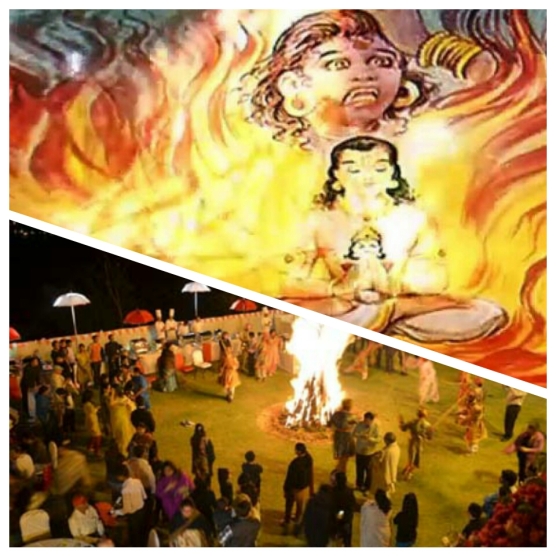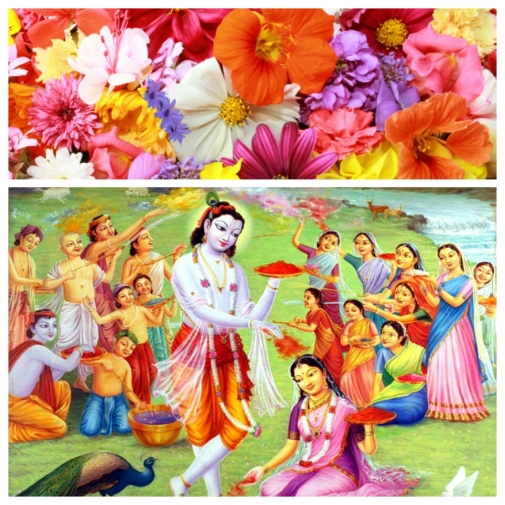The colorful festivals of Hindus are an integral part of every Indian. They speak of India’s rich cultural and traditional background. The commonness in all the celebrations is that they rejoice humanity and promote basic human values. Indian festivals have many aspects in their significance, namely spiritual, philosophical, religious and cultural. The cultural aspects of festivals deal with the joyous expressions of music and dance, with people wearing beautiful traditional dresses. The celebration of such festivals is one of the key strengths of continuity of cultural values. Culture in India is related with agriculture on one hand, and religious ideals on the other. Holi festival’s cultural significance can be evaluated in both contexts.

Holi, the festival of colour is celebrated every year throughout India with a feeling of strong community bonding and excitement on the last day of Phalguna and the first day of Chaitra month of Hindu calendar. On the eve of Holi, people burn firewood namely ‘Holi’ and enjoy with dance and music making circle around it. On the next morning, they play ‘Holi’ with colors. People put colors on each other without any discrimination, and eat especial sweet preparations, especially Gujjiya.
It is a seasonal celebration of spring time after a long winter. In spring season new harvest gets ready and it is time of happiness for farmers and others. The waste material of crops is to be destroyed. The natural process of destroying the waste through fire is celebrated as Holika-Dahan.
In Puranas, the story of wicked and powerful king named Hiranyakashyap and his virtuous and divine young son, Prahlad, is associated with Holika-Dahan. Holika was the sister of Hiranyakashyap who got a boon from God that she will never be damaged or burnt by fire when alone. Later being in her arrogance she forgot the condition of boon. Hiranyakashyap decided to kill his son Prahlad, a devotee of Lord Vishnu who had single-minded love for God, because he felt jealous. The king failed in his attempt to do so. Then finally he took the help of his sister who had the boon of not being burnt by the fire. Hiranyakashyap put Prahlad on the lap of Holika and blazed fire. Due to the grace of God, Prahlad was not burnt in the fire and Holika was destroyed. She was killed having evil intentions in mind, while Prahlad survived having full faith in Almighty. The moral of the story is clear that always virtue wins over vice.

The same story is told in a different way too, that Holika had been given a special shawl as a boon from God. When she wore that shawl she could not be burned by fire. Prahlad’s father and Holika planned to kill Prahlad by placing him in her lap while sitting in the fire using her shawl to protect her. But divine plan always works. When both entered in the fire, a strong gust of wind came and blew her shawl off of her. Hence, Holika was burnt in the fire of her own evil plan, and pure divine Prahlad remained safe with the devotion to God. Inner purity and inner piety are what truly save us.
Spring season is full of colorful flowers. Originally, playing Holi with colors symbolized association of prosperity and happiness with a good season and atmosphere. Holi is connected with Shri Krishna also who used to play Holi with his friends with great joy in his childhood at Mathura and Vrindavan. Even today Holi is regarded as the most popular festival of Vrindavan and Mathura regions.

One meaning of Holi is ‘sacrifice.’ We must remember to sacrifice that within us which is devilish and impure. Only then we will be protected, happy and pious to celebrate all colors of life.
–Mrs. Sushma Sharma, Principal, New Vision Intermediate College, Kanpur, UP, India


Very informative piece of writing !Such articles give an insight into the true meaning behind the festivals. Purity and inner piety are what truly save us . It can’t be explained better than the story mentioned.
More such articles are needed especially for the youth who is away from the folklore today.
LikeLiked by 1 person
extremely beneficial information. I express my heartfelt gratitude to you.
Thank you ma’am !
LikeLike